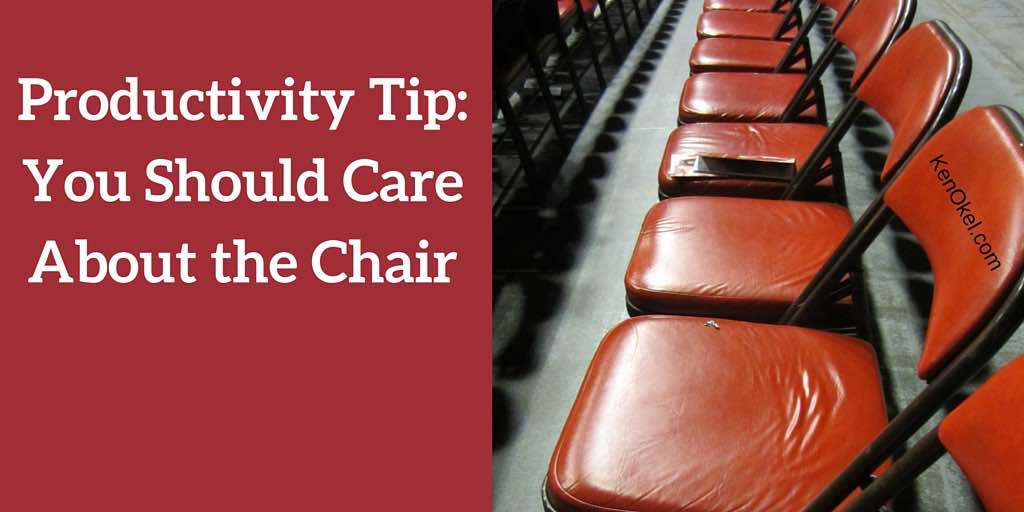 The productivity of an organization can be directly related to the attention given to small but important details. One of these, which is often overlooked, is to care about the chair.
The productivity of an organization can be directly related to the attention given to small but important details. One of these, which is often overlooked, is to care about the chair.
When I speak at or attend large meetings, I notice the layout of the room and specifically how the chairs are arranged.
Why should this matter? Because the layout of a room affects an audience?s attention and ability to remember information.
Often a conference planner has so many tasks on his or her mind that the amount of consideration given to the chairs is delivered via a simple statement like, ?Give me 50 rows of 10 chairs and put an aisle down the middle.?
Very often, the people who set up the chairs aren?t thinking about the audience that will sit in them. In fact, they probably know nothing about them. These hardworking crews create neat rows with a minimum amount of space between seats.
In their eyes, it?s technically perfect. For attendees, it can be a nightmare.
Tight chair spacing gives people very little elbow room. As a result, unless you?re seated on an aisle, you may feel like you?re in the middle seat of a discount airline, on a long flight. Uniform seating does not work for people who are not uniformly sized.
The space between rows, known as leg room, is also important. Nowadays many people have some sort of bag with them, whether it?s a purse or laptop case. Not accounting for where these things will go can lead to an unintentional obstacle course being created in a narrow aisle.
If people are willing to pay more money to fly on an airline with more leg room, then does it not make sense to give them a few more inches of space in your meeting?
While some may argue that these are trivial details, you must consider whether people can be at their best if they are uncomfortable. Will they remember the content or the discomfort?
Smart meeting planners care about the chair and they show this by mentally walking through every aspect of the attendee experience. It?s a great exercise that can keep problems from occurring. The practice gives them a chance to provide better instructions to those who set up the chairs.
If this seems excessive, then switch the word, attendee with the word, customer or employee. Now have the stakes gone up?
In many businesses, employees are given instructions but not the details. How can you expect them to execute your strategy if they don?t know why they need to do things a certain way? Chairs are easy to move. Your team is harder to change, especially if they don?t know what to do and have started to freelance.
Good training explains the details and how they relate to your big picture goals and your brand. Stop hiding behind excuses (They should know better. I don?t want to embarrass people with the obvious. Why do I need to tell them that?) and take the time to address your customer experience.
Don?t leave this opportunity to connect with your audience to chance because an uncomfortable audience is often less concerned about you and more focused on the exit sign. Little details matter.






